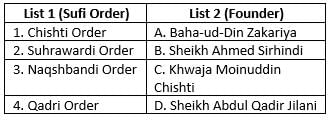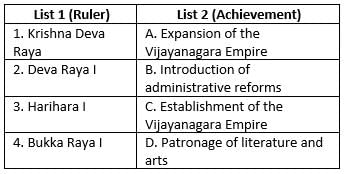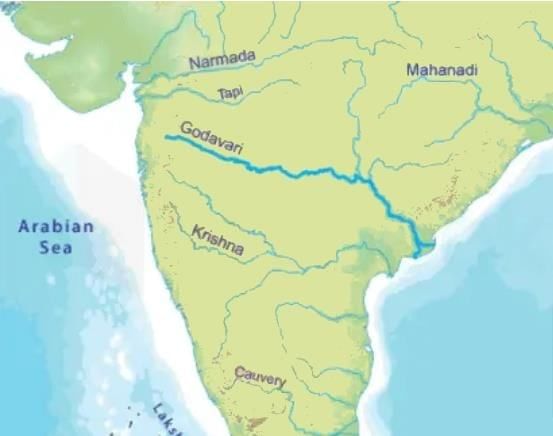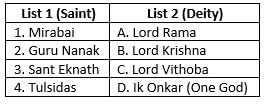History: CUET Mock Test - 7 - CUET MCQ
30 Questions MCQ Test - History: CUET Mock Test - 7
The leader of the Bhakti movement focusing on Lord Rama was ________.
Persian embassy Abdur Razzaq came to Vijayanagara under the rule of–
Consider the following statements regarding the Bhakti Movement.
1. Bhakti means love and devotional surrender to God.
2. The term Bhakti first appeared in Vyasa’s Bhagavad Gita.
Which of the above statements is/are correct?
When the sepoys began their action with a signal, what was the first thing they did during the Revolt of 1857?
On whose advice did Mahatma Gandhi spend a year travelling around British India after he returned from South Africa in 1915?
Which of the following Sufi saints was associated with the Chishti order?
In which languages did Sufi poets compose their verses?
How did Sufi teachings contribute to religious harmony in India?
Which factor contributed to the prosperity of the Vijayanagara Empire?
Who among the following was a famous ruler of the Vijayanagara Empire?
Which architectural style influenced temple construction in Vijayanagara?
What major event led to the decline of the Vijayanagara Empire?
Match the Sufi orders with their founders or major followers

Match the rulers with their achievements in the Vijayanagara Empire

Match the cities with their roles in the Vijayanagara Empire

Match the foreign travelers with their descriptions of Vijayanagara

Which of the following statements about gender roles in ancient India are correct?
(A) Women were considered the property of their husbands.
(B) The Manusmriti prescribed strict codes of conduct for women.
(C) Widow remarriage was widely accepted in all varnas.
(D) Women were expected to follow the ideals of pativrata (devotion to husband).
(E) Education for women was discouraged in Brahmanical traditions.
Choose the correct answer from the options given below:
Which of the following statements are correct?
(A) The Rig Veda is one of the oldest religious texts of Hinduism.
(B) The Upanishads focus on philosophical discussions about the self and the universe.
(C) The Jatakas are Buddhist texts containing stories of the Buddha’s previous lives.
(D) The Bhagavad Gita was composed before the Vedas.
(E) The Dharmasutras provided guidelines on social duties and justice.
Choose the correct answer from the options given below:
Which of the following statements about Buddhism are correct?
(A) The Buddha was born as Siddhartha Gautama.
(B) The Four Noble Truths are central to Buddhist teachings.
(C) Buddhism promoted the worship of gods and deities.
(D) The Eightfold Path is a guide to ethical and mindful living.
(E) The Buddhist Sangha was open to people of all castes and genders.
Choose the correct answer from the options given below:
Which of the following statements about Jainism are correct?
(A) Mahavira is considered the founder of Jainism.
(B) Jainism emphasizes non-violence as a core principle.
(C) Jains believe in a single supreme god.
(D) Jain monks and nuns follow a strict ascetic lifestyle.
(E) Jainism does not believe in karma and rebirth.
Choose the correct answer from the options given below:
Which of the following are NOT found in early Tamil Sangam texts?
I. Jokes
II. Prose
III. Poems
IV. Poetic





















